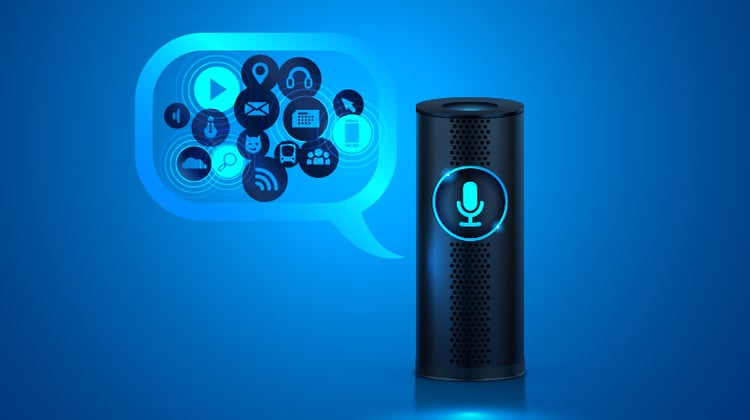
We have long known the power voice has in everything from providing an amazing customer experience to selling a product. Hearing someone speak in their own words, and respond thoughtfully, can never be replaced with technology. It is after all the human connection that so much of business relies on. But this is not to say technology isn’t moving quickly in the voice department.
Voice recognition software has come leaps and bounds in the past decade, and voice assistants are now completely mainstream. It is estimated that every one in six Americans own a smart speaker (Google Home, Amazon Echo) and eMarketer forecasts that nearly 100 million smartphone users will be using voice assistants in 2020.
Brands such as Amazon and Google are continuing to fuel this trend as they compete for market share. Voice interfaces are advancing at an exponential rate in industries of all kinds, ranging from healthcare to banking, as companies are racing to release their own voice technology integrations to keep pace with consumer demand. But what are the advancements in voice assistant technology that you can expect to see soon? And what do they mean for your day-to-day life, at work and at home? Read on to find out.
Easy Conversations
Both Google and Amazon no longer require the use of repeated “wake” words. Previously both assistants were dependent on a wake word (Alexa or Ok, Google) to initiate a new line of conversation. For example, if you wanted to know if you had apples in your Ocado basket, and asked Alexa if you did, you would not then have to say ‘Alexa’ again before asking her to add some. This makes talking to your voice assistant much easier, almost like a natural conversation.
Individualised Experiences
Voice assistants will continue to offer more individualised experiences as they get better at differentiating between voices. Google Home is able to support up to six user accounts and detect unique voices, which allows Google Home users to customise many features. Users can ask “What’s in my diary today?” or “tell me about my day?” and the assistant will dictate commute times, weather, and news information for individual users. It also includes features such as nicknames, work locations, payment information, and linked accounts such as Google Play, Spotify, and Netflix. Similarly, for those using Alexa, simply saying “learn my voice” will allow users to create separate voice profiles so the technology can detect who is speaking for more individualised experiences.
Voice Push Notifications
Voice technology presents a unique means of distributing push notifications. As a way to increase user engagement and retention, push notifications simply remind users of the app and display relevant messaging to the user. Now that both Google Assistant and Amazon’s Alexa allow the user to enable spoken notifications for any third-party app that has the compatibility, users can hear notifications rather than read them. These notifications are generally related to diary appointments or new content from core features.
Touch Interaction
CES 2019 made it clear that voice and visual displays are merging into one seamless experience. This year Google showcased what is being called the E Ink Screen. This display can show the weather, local traffic information, or calendar events. The push to bring visual and voice capabilities together will allow users to further interact with the assistant.
Security Matters
Lots of people feel like voice assistants are always listening — recording personal conversations and in fact, everything they say. While it isn’t true that they are recording, security is a concern, particularly as these assistants enter the realm of buying things with a simple voice command. As such, voice payments will become more secure and convenient for users to make purchases. Speaker verification and ID will also become paramount as part of the voice assistant experience with more security being built around the user.
Changing Your Work Experience
What we find most fascinating is how all of these developments will work with soft phone applications — soft phones that integrate with your other software applications, such as your CRM. The business world really begins to transform when you have a voice assistant who speaks to you (push notifications) to remind you of meetings, has access to all your contacts and call history, can record calls, conference people in, initiate a video call, open up contact records, read case notes, log calls and record notes in CRM records through voice only. Add to that, a touch screen that lets you flick through pages of a report, view all your emails and host video conferences and suddenly work becomes much lighter. The days of being stuck to your keyboard, starring at your computer screen are gone, replaced with a world where you can work anywhere, and do most things with the sound of your voice, from book a last minute holiday to schedule a massage after work.
Just imagine that, because that is the future - and it isn't too far off.
About VTSL
VTSL is a leading unified communications technology company, providing organisations across the UK and Ireland with the solutions they need to work smarter. From integrated telephony-CRM systems, to video and conferencing, to enabling flexible working through mobile phones that work just like the office phone, VTSL is committed to helping companies use technology to get ahead. Find out more about VTSL's award-winning VoIP business telephony system, network solutions and software integrations by emailing info@vtsl.net or giving us a call.

